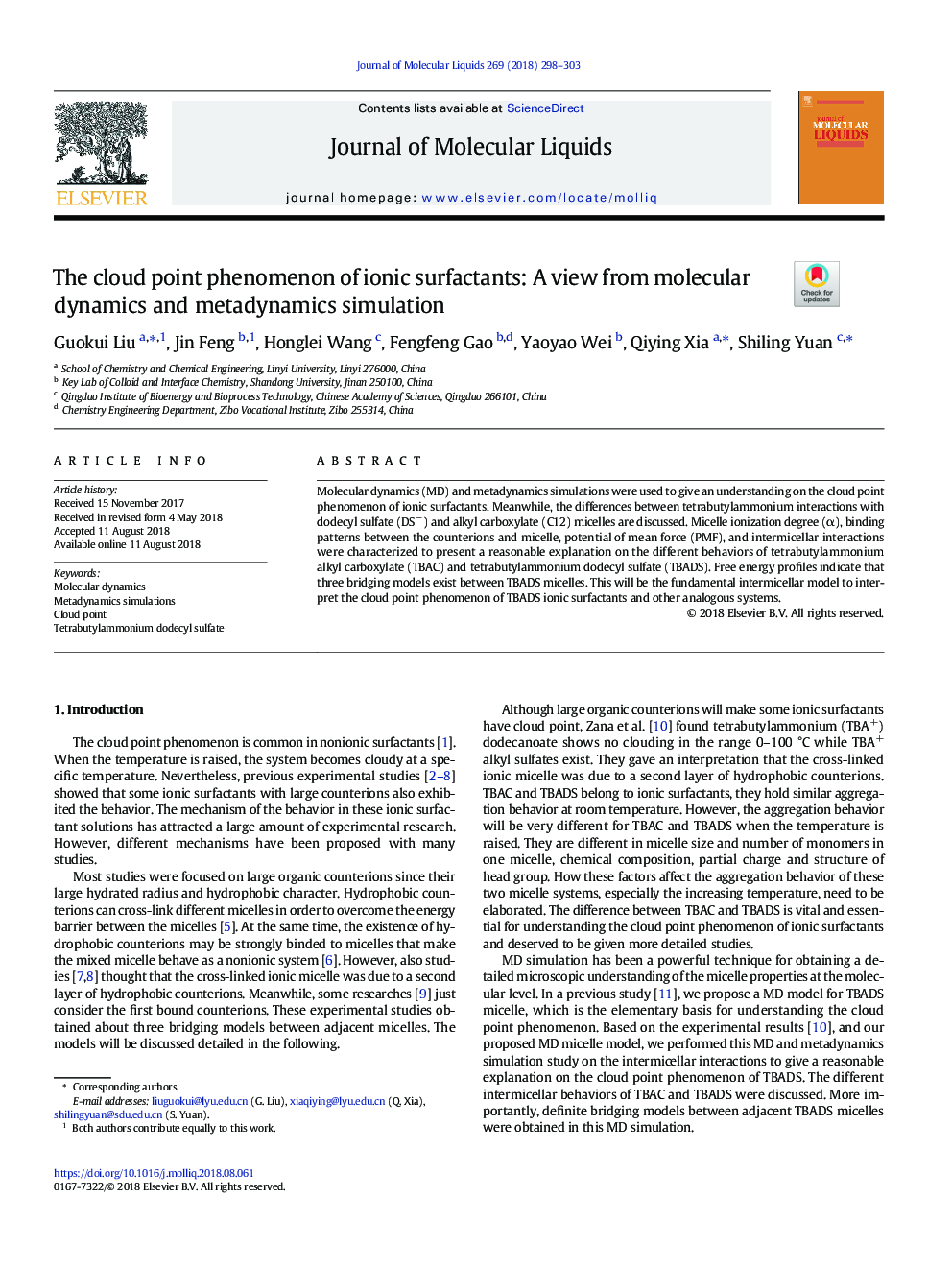| Article ID | Journal | Published Year | Pages | File Type |
|---|---|---|---|---|
| 7841612 | Journal of Molecular Liquids | 2018 | 6 Pages |
Abstract
Molecular dynamics (MD) and metadynamics simulations were used to give an understanding on the cloud point phenomenon of ionic surfactants. Meanwhile, the differences between tetrabutylammonium interactions with dodecyl sulfate (DSâ) and alkyl carboxylate (C12) micelles are discussed. Micelle ionization degree (α), binding patterns between the counterions and micelle, potential of mean force (PMF), and intermicellar interactions were characterized to present a reasonable explanation on the different behaviors of tetrabutylammonium alkyl carboxylate (TBAC) and tetrabutylammonium dodecyl sulfate (TBADS). Free energy profiles indicate that three bridging models exist between TBADS micelles. This will be the fundamental intermicellar model to interpret the cloud point phenomenon of TBADS ionic surfactants and other analogous systems.
Keywords
Related Topics
Physical Sciences and Engineering
Chemistry
Physical and Theoretical Chemistry
Authors
Guokui Liu, Jin Feng, Honglei Wang, Fengfeng Gao, Yaoyao Wei, Qiying Xia, Shiling Yuan,
